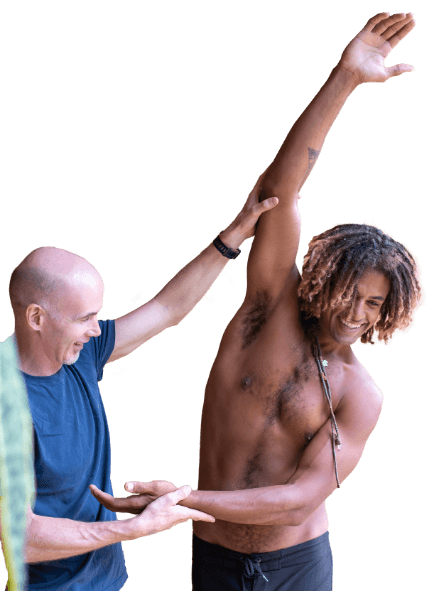
I’ve been helping people take a whole-body approach to their scoliosis for years.
One of the reasons for this is that we can’t ignore the rest of the body when dealing with scoliosis. Dentists and researchers have long postulated imbalances in the teeth (1) may play a role in idiopathic scoliosis, and many other disciplines have good theories about what causes scoliosis. There is, currently, no ‘smoking gun’ when it comes to the cause of adolescent idiopathic scoliosis. However, it is worth looking at the rest of the body for anything that could contribute to scoliosis or prevent it from improving.
One area I’m particularly interested in is the pelvis.
I view the pelvis as the foundation of the spine. If we drop a midline or ‘plumb line’ down the front of someone’s body it would follow their spine and then dissect the pelvis in half. However, my scoliosis patients often have their pelvis rotated or shifted to one side.
Often, this is an adaptation to scoliosis, but what if it’s an adaptation to something with the feet or hips that is actually making the scoliosis worse?
However, sometimes, the anatomy of the scoliosis can also drive the pelvis into rotation and an oblique tilt. This has to do with the weight shift that happens when scoliosis isn’t balanced. In an S-curve, this occurs when one curve is larger than the other, but it’s also common in adult degenerative lumbar spine scoliosis. But this is then compounded by postural habits that tighten up muscles. Assessing the hips in all six cardinal directions is essential before starting any corrective-type exercise.
In the Scoliosis Correction Protocol, we use 22 different body tests to build a picture of imbalances in our patients before we get them to do any specific scoliosis exercises. This allows the scoliosis exercises to be more effective as they are not ‘fighting’ against muscle imbalance elsewhere in the body that could be adding to their scoliosis.
Understanding the interconnectedness of pelvic and lower extremity imbalances with scoliosis progression underscores the holistic approach required for effective management. By addressing these contributing factors through tailored interventions, we can optimize postural alignment and mitigate the impact of scoliosis on overall spinal health. As healthcare practitioners, we must learn to recognize and address these intricate relationships to provide comprehensive care for individuals with scoliosis.
I hope you found this information helpful. If you want my help to see if we can use specific exercises and lifestyle medicine to help you recover from pain, injury, or illness, please reach out to me via ed@edpaget.com

Over the last 10 years Ed has been building a YouTube library to help people manage their own pain or movement limitations and increase performance through exercise. He regularly adds videos so be sure to subscribe and visit regularly


"Oh My Gosh- I am ALREADY feeling relief after a few days! I used to wake up 2-3 times a night with shooting pain that anti inflammatories couldn't touch. Now I have been waking up just because I want to notice what it feels like to lay in bed pain free- THANK YOU!."

"When I first started with your program I was experience a lot of pain. Walking was difficult. I had to stop and catch my breath every few minutes and lean against a wall for support. Now when I walk with my husband we go for over an hour. I never had to sit down and stop...and, hardly any pain!!! 😊😊 I can’t thank you enough."
Frustrated that you aren't recovering fast enough?
Discover how to heal from illness and injury using movement, food and lifestyle.